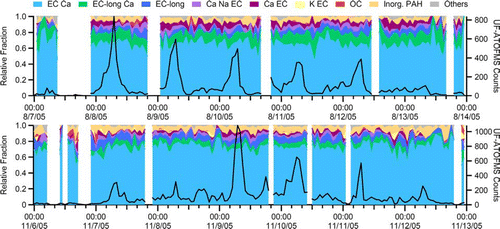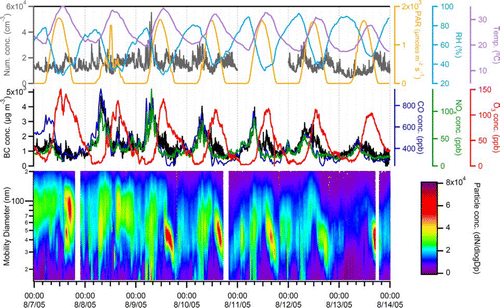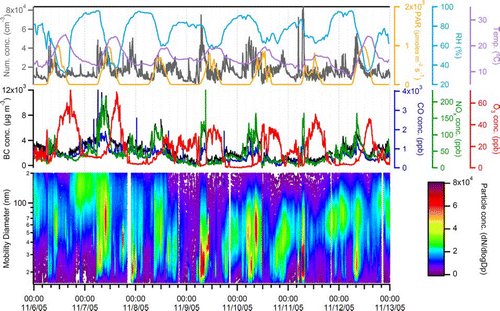Figures & data
TABLE 1 Instrumentation
FIG. 1 Hourly UF-ATOFMS counts of single particles for which chemical information was obtained as a function of aerodynamic diameter during the summer (top) and fall (bottom). (Figure provided in color online.)
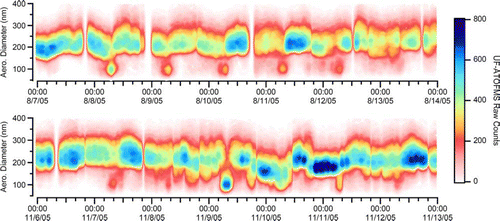
FIG. 2 Representative mass spectra for the general chemical classes of ultrafine particles as determined by the UF-ATOFMS. “CT” in the negative spectra represents crosstalk due to the interference of extremely intense peaks in the positive polarity.
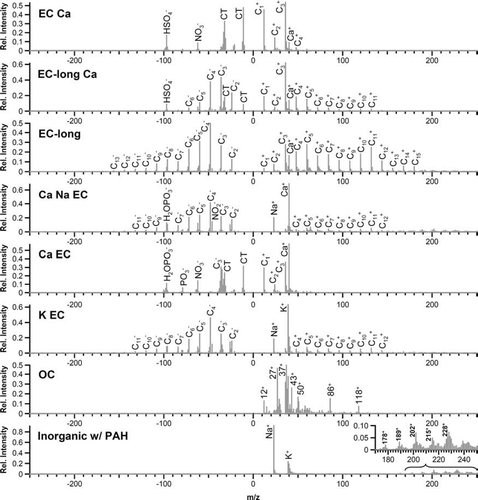
FIG. 3 Relative size distribution (10 nm bins) of ultrafine particle types during the summer (a) and fall (b). The black trace represents the total number of ultrafine particles chemically analyzed by the UF-ATOFMS in each 10 nm size bin. (Figure provided in color online.)
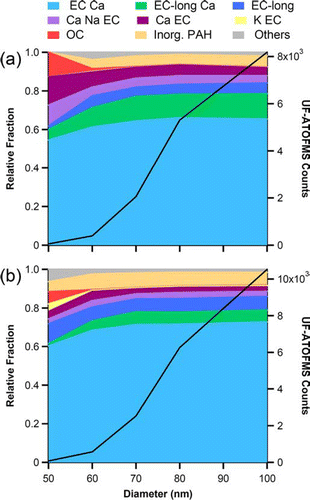
FIG. 4 Hourly relative fractions of ultrafine particle types during the summer (top) and fall (bottom). The black trace represents the hourly total of ultrafine particles (50–100 nm) chemically analyzed by the UF-ATOFMS. (Figure provided in color online.)
